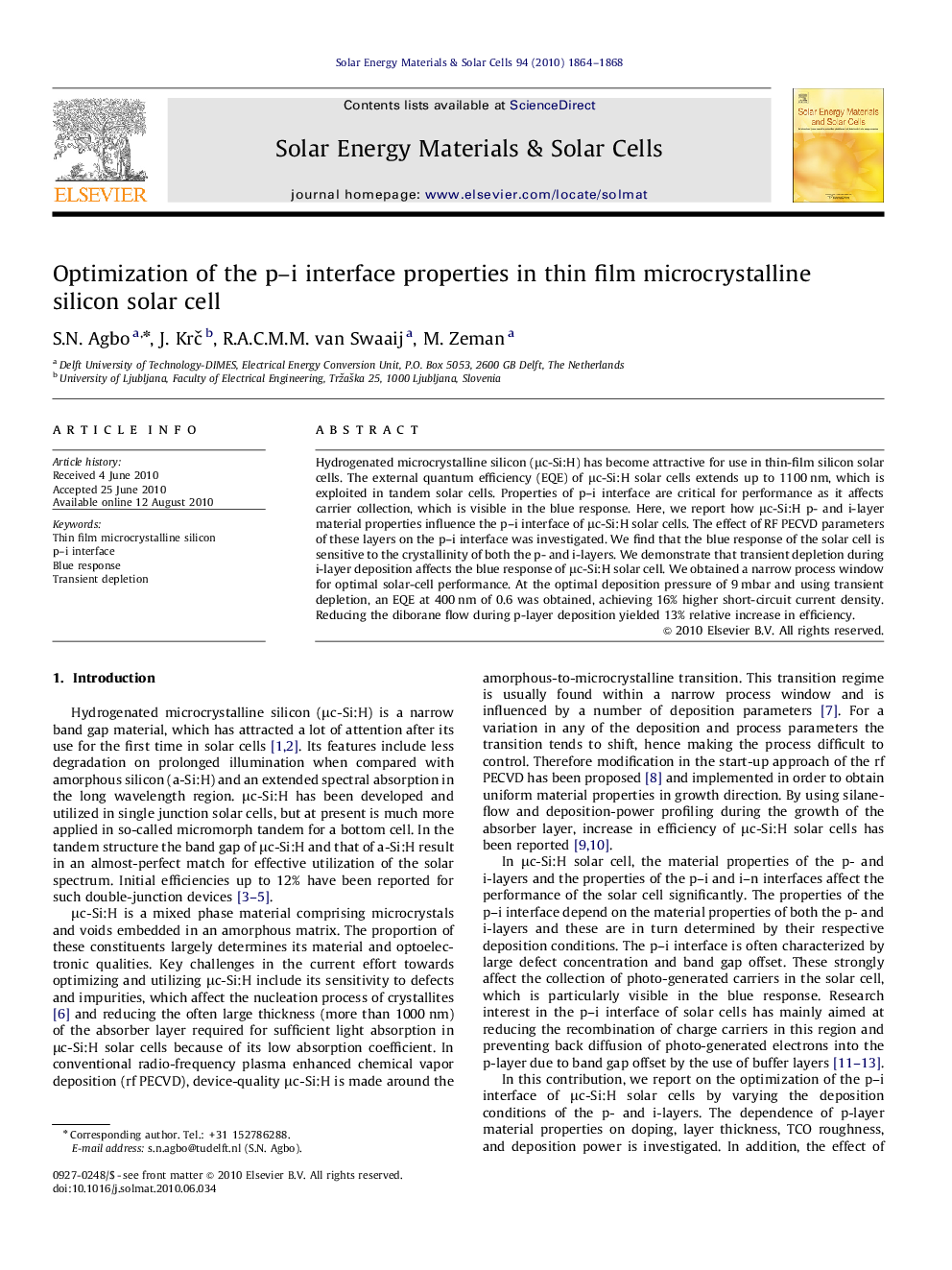| Article ID | Journal | Published Year | Pages | File Type |
|---|---|---|---|---|
| 79396 | Solar Energy Materials and Solar Cells | 2010 | 5 Pages |
Hydrogenated microcrystalline silicon (μc-Si:H) has become attractive for use in thin-film silicon solar cells. The external quantum efficiency (EQE) of μc-Si:H solar cells extends up to 1100 nm, which is exploited in tandem solar cells. Properties of p–i interface are critical for performance as it affects carrier collection, which is visible in the blue response. Here, we report how μc-Si:H p- and i-layer material properties influence the p–i interface of μc-Si:H solar cells. The effect of RF PECVD parameters of these layers on the p–i interface was investigated. We find that the blue response of the solar cell is sensitive to the crystallinity of both the p- and i-layers. We demonstrate that transient depletion during i-layer deposition affects the blue response of μc-Si:H solar cell. We obtained a narrow process window for optimal solar-cell performance. At the optimal deposition pressure of 9 mbar and using transient depletion, an EQE at 400 nm of 0.6 was obtained, achieving 16% higher short-circuit current density. Reducing the diborane flow during p-layer deposition yielded 13% relative increase in efficiency.
